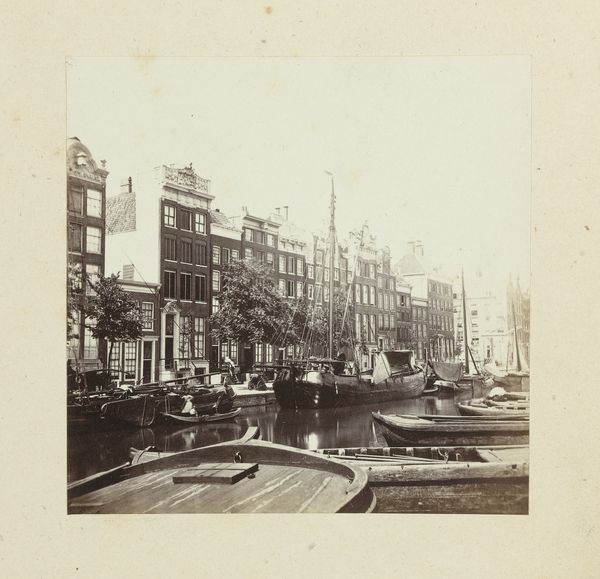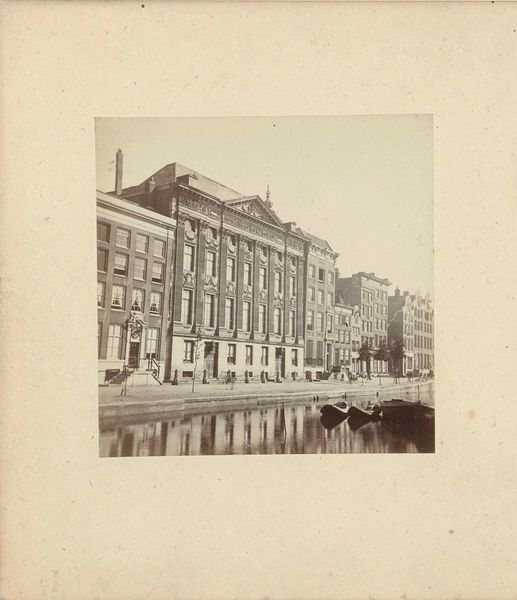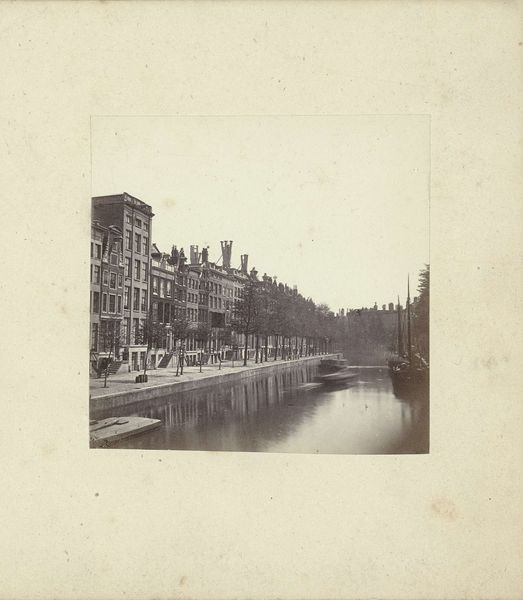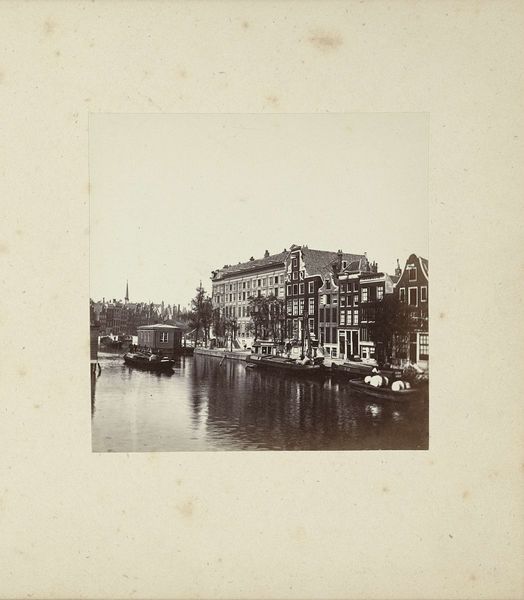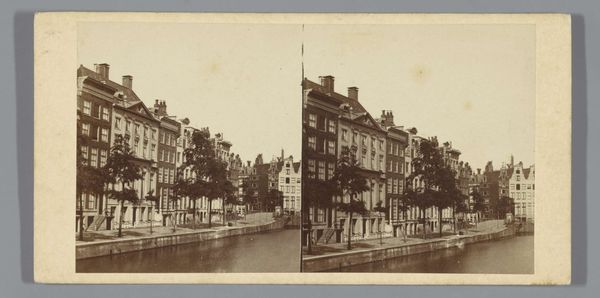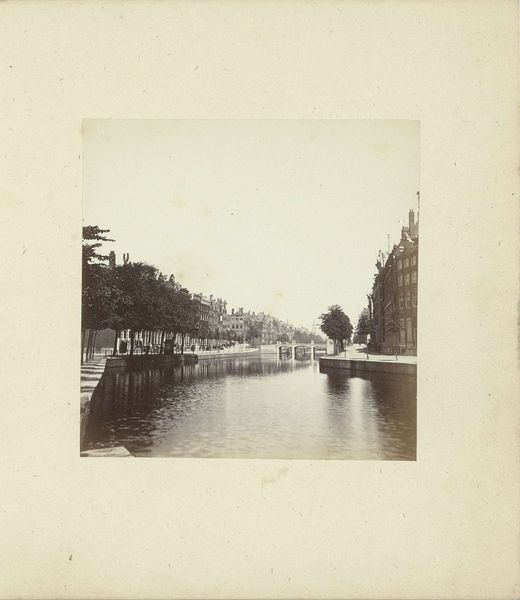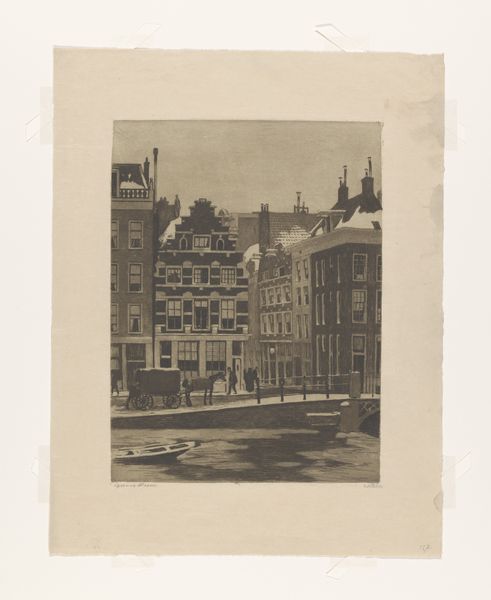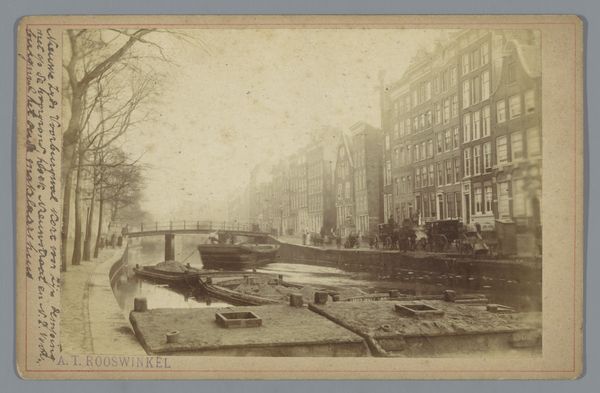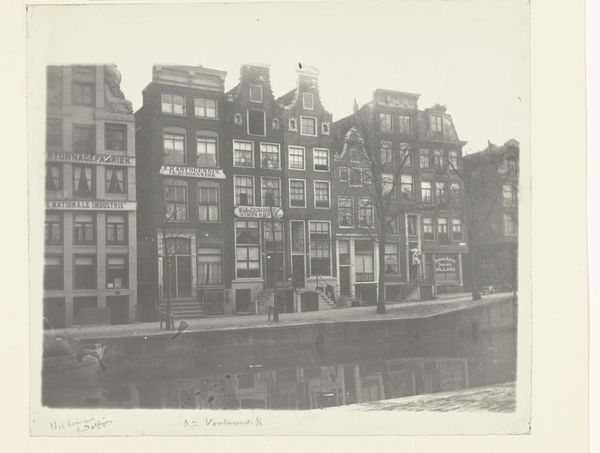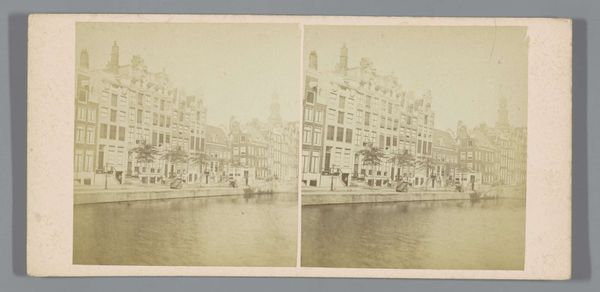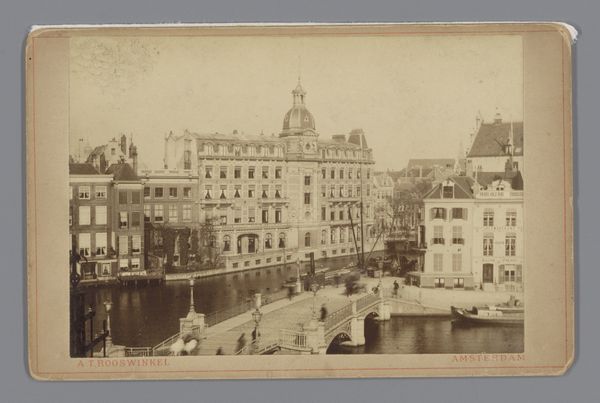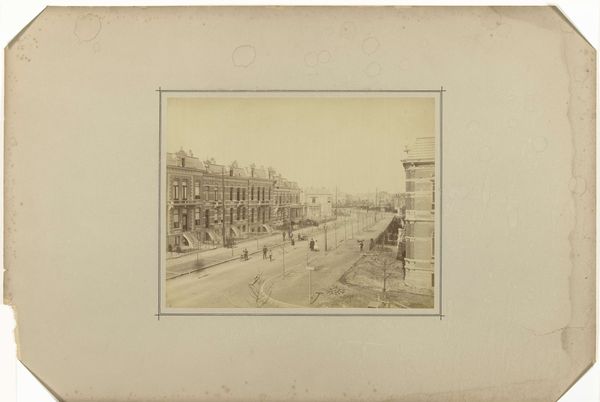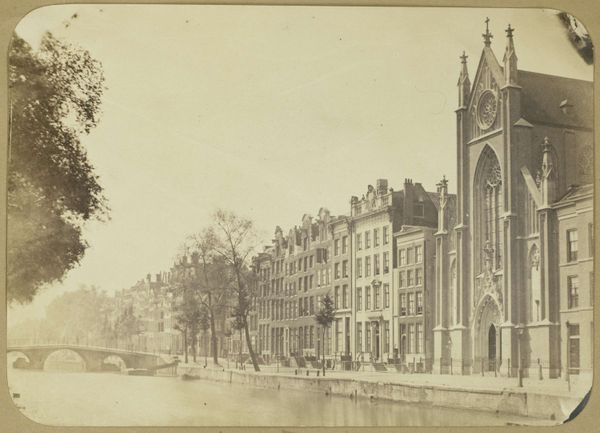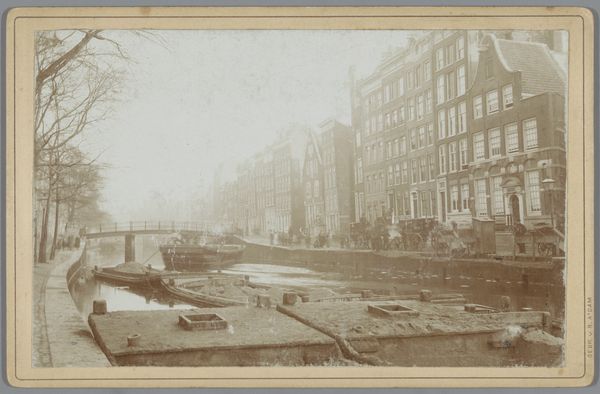
Gezicht op het Singel bij de Korsjespoortsteeg in Amsterdam c. 1860 - 1875
0:00
0:00
print, photography
#
dutch-golden-age
# print
#
photography
#
cityscape
Dimensions: height 81 mm, width 81 mm, height 145 mm, width 234 mm
Copyright: Rijks Museum: Open Domain
Curator: This photograph, entitled "Gezicht op het Singel bij de Korsjespoortsteeg in Amsterdam," likely dates from sometime between 1860 and 1875. We unfortunately don’t know the identity of the photographer, but it’s a fascinating early example of urban photography. Editor: It evokes such a stillness, doesn't it? That sepia tone, the way the light reflects off the water, and that figure walking, nearly frozen in time... it feels almost dreamlike. The photograph is quite crisp. Curator: Indeed, there’s a deliberate clarity. Notice how the photographer meticulously captured the architectural nuances along the Singel canal. It's not just documentation; it's a constructed vision of Amsterdam’s bourgeois respectability. The repetition of similar housefronts tells its own tale. Editor: Exactly! And the subtle variations between each facade are incredibly engaging. Those stepped gables, for instance, speak to generations of prosperous merchants competing to build the most impressive homes. They’re almost like emblems of ambition, reflected in the water below. I also think of those who inhabited these dwellings over the years, going about their everyday lives in a way the canal bears witness to. Curator: You’re touching on the socio-economic implications embedded in this photograph. The very act of creating this image and the later reception of this visual, helps formulate an important cultural memory. It helps create Amsterdam's image in people's mind! The presence of those architectural details served to communicate wealth, status, and a lineage of success to the world, contributing to Amsterdam’s self-fashioning as a prominent city. Editor: It's almost as if those houses were meant to last forever, solid and steadfast, but it would also be interesting to uncover the photographer's motive and explore the artistic intent, or how they wanted to represent the place. A lot to reflect on. Curator: Agreed. This photograph serves as an index to the physical and cultural history of Amsterdam during this era, leaving behind subtle clues and larger details we are here unpacking together today. Editor: Precisely. And hopefully it will invite viewers to bring in their individual memories of places to continue expanding this interpretation.
Comments
No comments
Be the first to comment and join the conversation on the ultimate creative platform.
